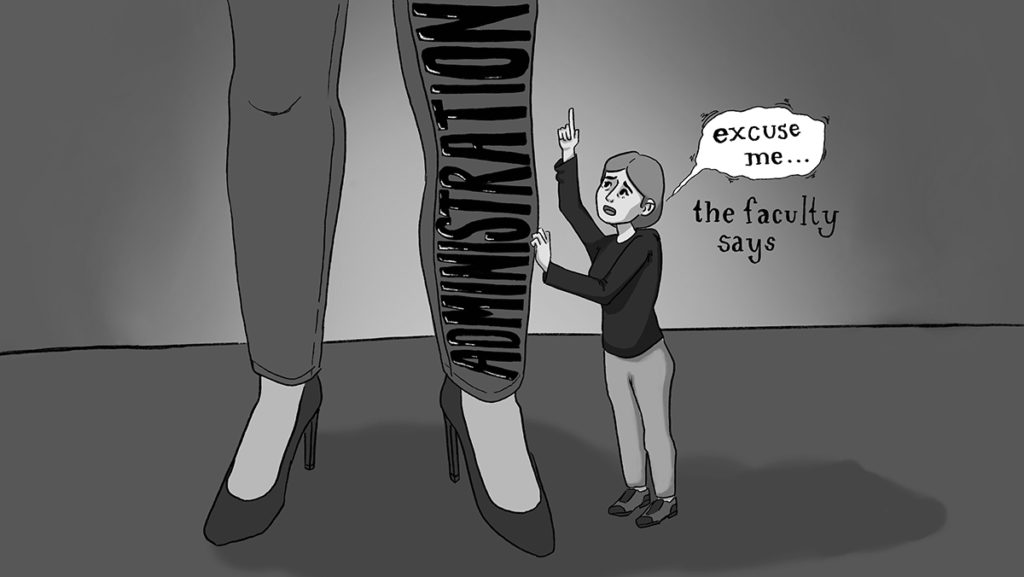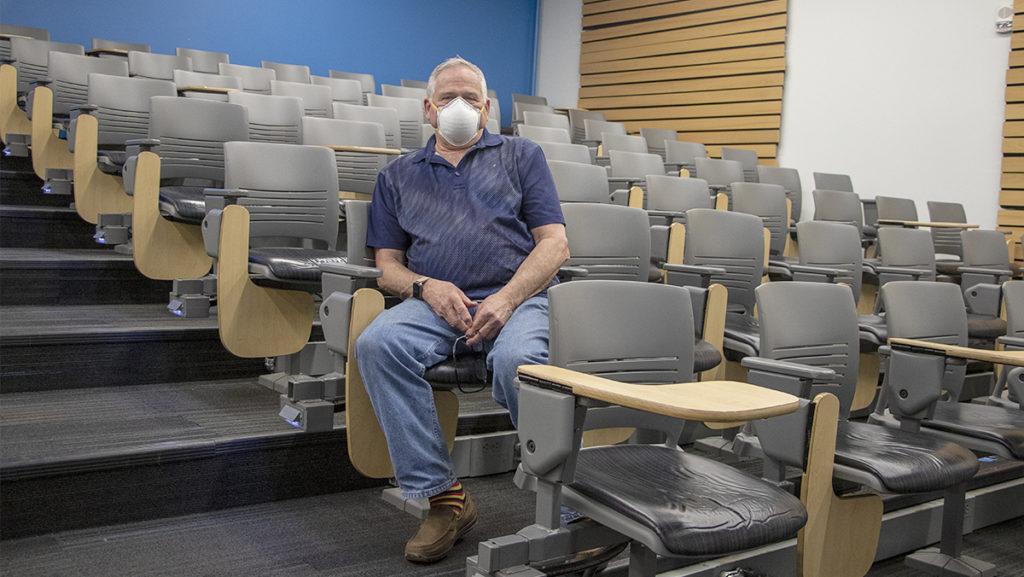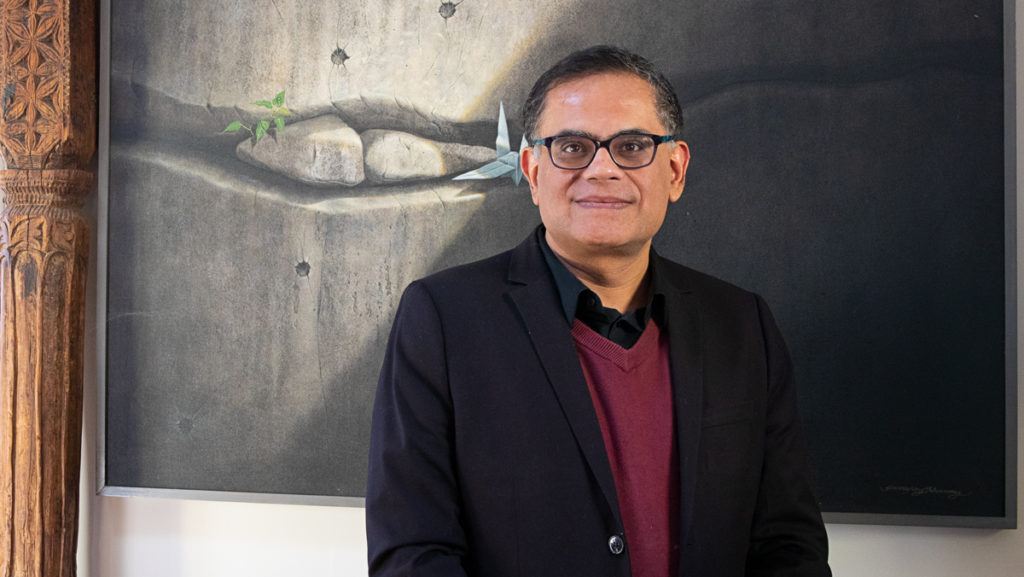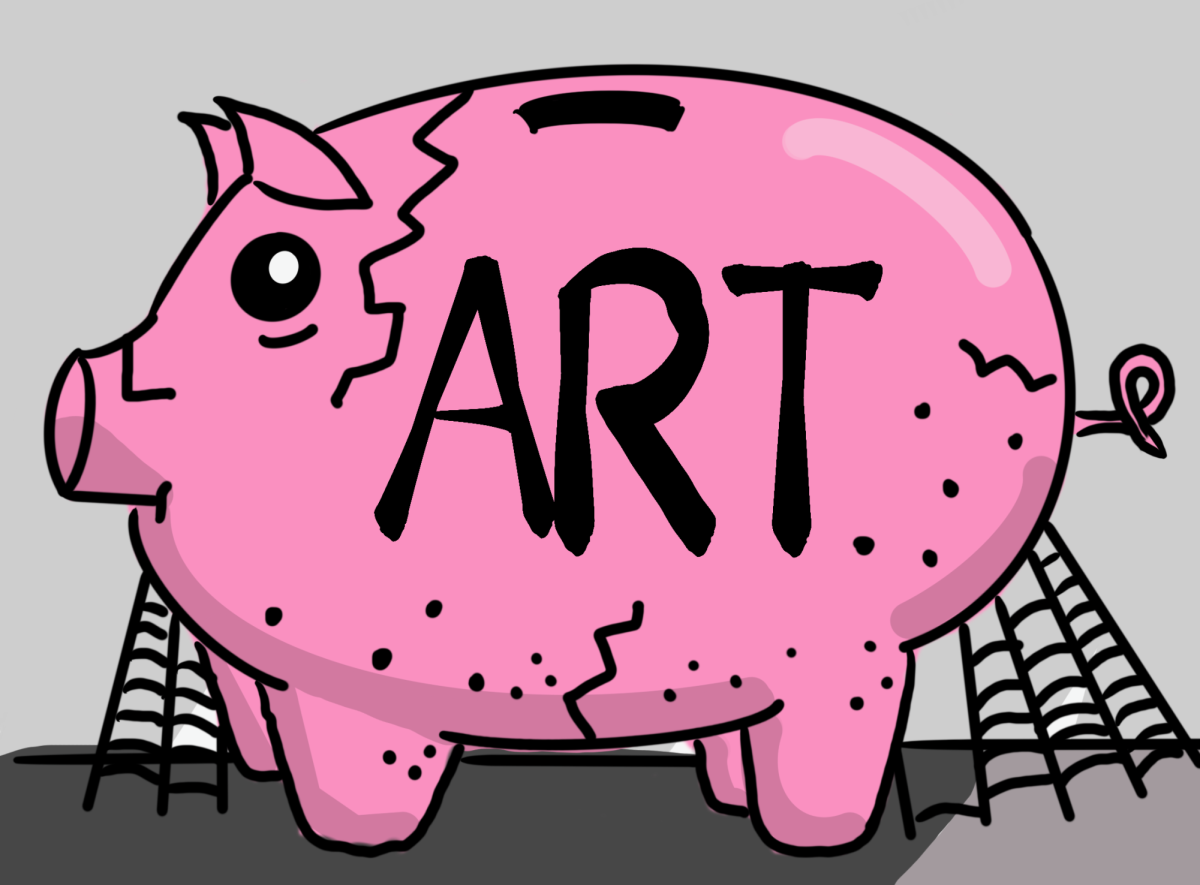Shared governance should not be a large ask, especially when people’s livelihoods are on the line.
The current rhetoric of the Academic Program Prioritization (APP) process at Ithaca College is that members of the Senior Leadership Team have the final say about which programs will be affected. Community members feel like they are left in the dark and excluded — a feeling that is not new at the college. However, academic prioritization does not work when it operates primarily at the top.
According to a 2013 study published in Academic Impressions, a higher-education development firm, resistance to change and a lack of buy-in from faculty and staff are the two main reasons for unsuccessful academic program prioritizations. Institutions that have engaged with prioritization processes have cited a faculty “lack of will to see the process through and make the bold decisions needed to move the institution into the future.”
Why should faculty members be willing to see the process through if they feel like they do not have adequate opportunities to provide input?
The study states that the most successful prioritization processes include “broad participation from faculty and administrators,” a process that “is conducted in such a way as to build greater trust among stakeholders.” This can look like multiple information sessions that include the project’s goals in detail and opportunities for the community to provide feedback that will help define how the effort will proceed — before committees propose any decisions.
In October 2015, the Ithaca College Board of Trustees passed a resolution asking the provost to convene a task force consisting of faculty, staff and students to review shared governance at the college and make recommendations for improvement. Perhaps it is time to revisit that.
During its academic prioritization process in 2015, St. Joseph’s College in New York asked faculty members to prepare detailed reports about their departments — including key functions of their programs, whether other academic programs depended on them and how programs advanced the institution’s strategic plan. Additionally, chairs discussed enrollment, competition for their programs, what faculty members were doing to increase demand, instructional quality control mechanisms, whether staffing was adequate and how graduates fared post-graduation, according to Inside Higher Ed.
According to the latest APP update from La Jerne Cornish, provost and senior vice president for academic affairs, sent Oct. 23, the Academic Program Prioritization Advisory Committee (APPAC) is now awaiting responses from individual faculty members who received a survey for their ideas for consolidation, reorganization and discontinuance. The APPAC chairs have also reached out to department chairs and program coordinators to gather collective department feedback for ideas, according to the letter.
Some community members have said that it is difficult for them to share these ideas when they are still confused about the ultimate goals of the process. This only emphasizes the need for clearer communication on behalf of the administration.
Part of this clarity has to do with the college’s finances, which are extremely opaque. According to Inside Higher Ed, the College of Saint Rose in Albany, New York, and Felician University, formerly known as Felician College, in Rutherford, New Jersey, both claimed that financial difficulties were the catalyst to their faculty cuts. However, investigations from the American Association of University Professors assert that neither of these colleges was in dire financial straits at the time of the cuts.
Ithaca College has been facing financial difficulties for years, and it’s likely that it has only gotten worse amid the COVID-19 pandemic. Why is there hesitancy to show the whole picture to members of the campus community?
The administration is preparing to execute cuts and possible reorganization so drastic that the college’s very identity — and survival — may be on the line. The broader campus community — faculty, staff, students, alumni and community members — needs to have more opportunities to engage with the APP process. Looking forward to the latter half of the process, the SLT should present the options to the campus community before a final decision is made. This decision needs to be based on the campus community’s feedback. If those constituencies are not properly empowered in this process and their needs and concerns are not addressed, they may be left with no other choice than to resort to what may be the only real power they have: a vote of no confidence in the administration.
Clearly, this is something no one wants to see happen. Shared governance can be achieved. The college is just making it more difficult than it needs to be.



















